10 of the world's best skies for stargazing
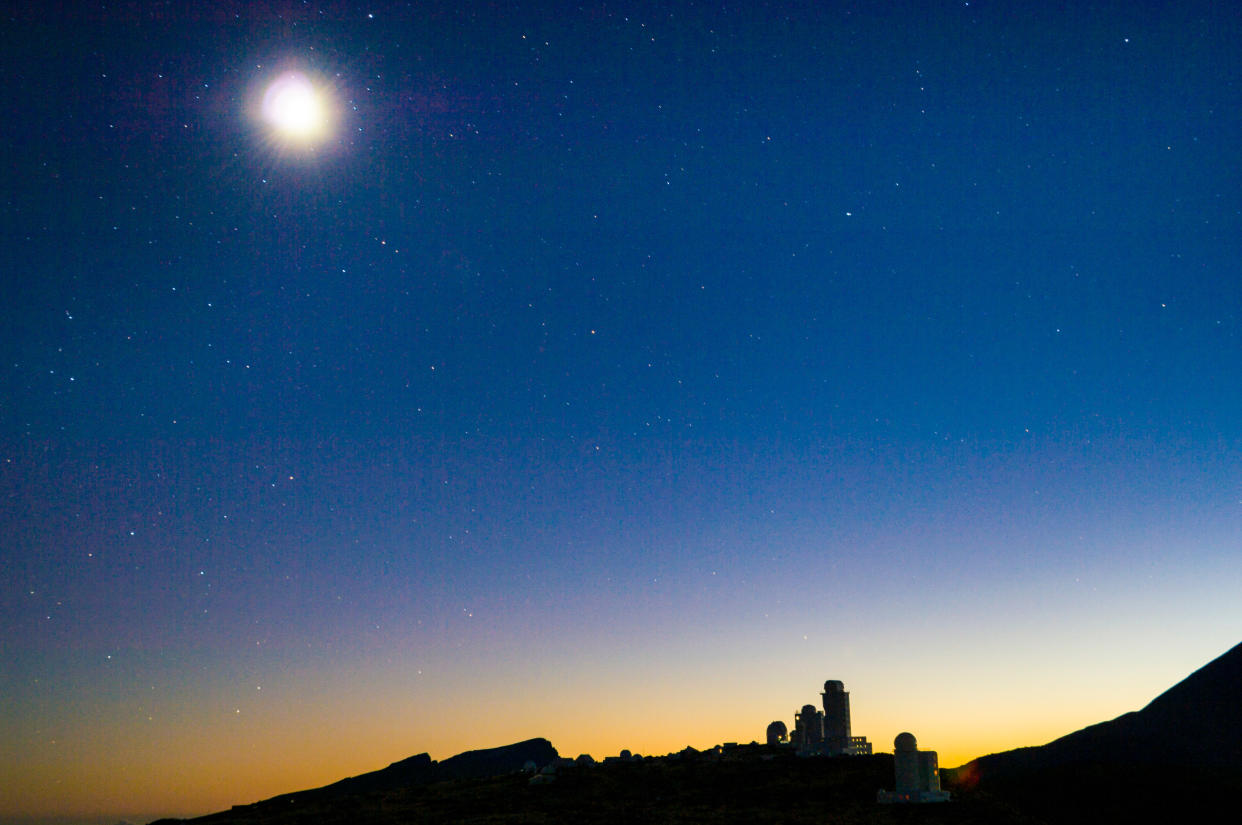
One of the most awe-inspiring stargazing night skies I ever saw was in Tenerife in spring, but it took more than just looking up. I didn’t try to stargaze from Los Cristianos, Playa de las Americas or the light polluted capital city, Santa Cruz de Tenerife.
Instead, my wife and I headed inland and ever upwards in search of somewhere with a legendary reputation among stargazers: the chilly Parque Nacional del Teide. This Unesco World Heritage Centre began to feel other-worldly as soon as the winding road looped into a giant volcanic crater. There was a distinctly lunar look to its vast lava fields, each one representing a violent cataclysmic event, but there was going to be no other lunar sightings; I had made sure we were here during a new moon when the night skies are darkest.
Getting to the peak of El Teide was the easy bit. Hundreds of tourists climb into the Teleférico del Teide (telefericoteide.com) cable car each day for the eight-minute ride (it’s €22.50/£20 for a return ticket), though my late afternoon departure was near empty. It was starting to get colder as the air got thinner even before I stepped out of the cable car at its upper station. Here at an altitude of 11,663ft, the volcanic rock was covered in snow, and so was the peak of El Teide just above.
The darkness spread quickly to leave a night sky of unbelievable clarity. Orion’s three belt stars were sparkling more than I had ever seen, with star clusters like the Hyades and the Pleiades (also known as the Seven Sisters) especially prominent. I can usually see five stars with the naked eye; that night I counted 10. I even saw the glowing triangle of light a sunset leaves in its wake; it’s called zodiacal light – sunlight reflecting off dust in the solar system.
Light pollution is making stargazing of this quality the reserve only of those who can travel, which is a shame, though it’s easy enough to find an International Dark Sky Reserve or Park in the UK (darksky.org). The Brecon Beacons and the Elan Valley in Wales, Exmoor, and Kielder Water and Forest Park in England, and Galloway Forest Park in Scotland all have protected dark skies.
Below is my pick of dramatic dark-sky destinations that offer spectacular views.
1. Fuerteventura, Canary Islands
Most Brits pass through the resort towns of the Canary Islands without ever getting a good look at their glistening night skies, but the clear nights in Fuerteventura offer some accessible stargazing experiences. The entire island is a Starlight Reserve, and local company Stars by Night offers excellent guided stargazing sessions with an astronomer, and even short courses in astrophotography. The light pollution of Lanzarote is away to the north, so on a warm summer night you can see the Milky Way shining as brightly as anywhere on the planet.
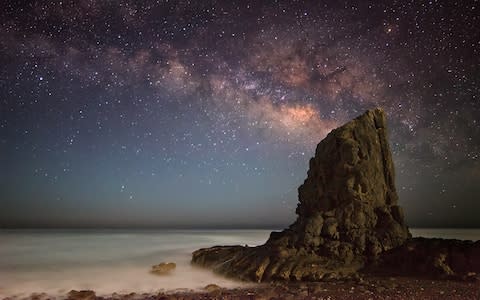
Stars by Night’s one-and-a-half hour observing session costs €67 per adult/€47 under 12s, which includes a meal and drinks in Pozo Negro, observation with an astronomer in La Atalayita, and transport from accommodation in the Caleta de Fuste area. Private guided astrophotography is €147 for five hours shooting around the island (0034 610 367 063; starsbynight.es).
2. Brecon Beacons, Wales
It’s barren, it’s wild and it’s also often wet, but when the skies do clear the night sky above the Brecon Beacons International Dark Sky Reserve is hard to beat. Stargazer’s Retreat between Trecastle and Crai provides not only a cosy bolt-hole, but a small computerised (and even heated) observatory. Also in the Brecon Beacons, Cwmdu Campsite near Crickhowell hosts the twice-yearly AstroCamp (astrocamp.awesomeastronomy.com), a friendly gathering of stargazers that welcomes newcomers to have a go on a plethora of large telescopes.
A night at Stargazer’s Retreat in the Brecon Beacons costs from £50 per night for two in self-catering accommodation (07787 054089; stargazersretreat.co.uk).
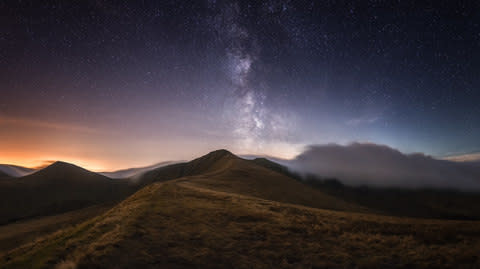
3. Dead Horse Point State Park, Utah, US
About 2,000ft above a gooseneck in the Colorado River, this promontory is one of the darkest places in the south-west US. An International Dark Sky Park, the observation platforms atop its vertical cliffs are ideal for stargazing, and it also happens to be one of the only places to camp in the area. However, if you want a classic arch-meets-Milky Way photograph, spend the afternoon touring the dramatic “Island in the Sky” in the adjoining Canyonlands National Park – another International Dark Sky Park.
A night at Kayenta Campground in Dead Horse Point State Park costs US$35 (£26) per night, which includes a tent square, picnic table and shelter, a barbecue/firepit, and access to bathrooms and water (001 800 322 3770; reserveamerica.com).
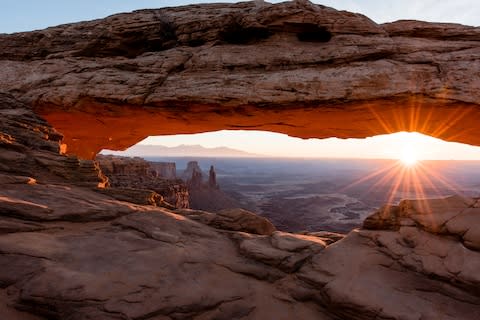
4. Hotel RangA, Hella, Iceland
There’s much chatter among travellers about the best place to see the Northern Lights, but for Brits, Iceland is the clear winner. Cheap flights to Reykjavik help, but more important is the jet-stream, which makes Iceland about 18F (10C) warmer than the likes of Finland, Sweden and Norway. It’s much easier here to stand in the snow and stare at the twisting magnetic storms above your head without freezing, although it’s still cold enough for the outdoor hot tubs at the log-built Hotel Ranga to tempt. It has an impressive on-site observatory and a daily guided tour of the night sky.
A three-night stargazing break at Hotel Ranga costs from €1,122 for two, which includes breakfast and dinner, and access to the observatory and hot tubs. Flights not included. Departures from September to the end of May (00354 487 5700; hotelranga.is).
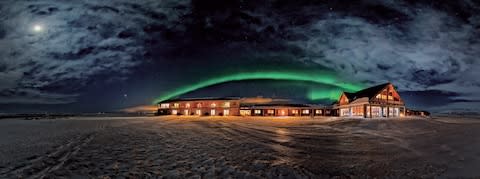
5. Atacama Desert, Chile
All good stargazers know that clear skies are best viewed while clutching a good cabernet sauvignon, which may make Chile the ultimate dark sky destination. However, it’s pisco brandy that’s the tipple of choice in the Elqui Valley, a high-altitude area studded with professional telescopes owned by the European Southern Observatory, such as La Silla. It’s also home to smaller boutique observatories that hold regular nightly stargazing sessions. If you’ve never seen the night sky from the southern hemisphere, prepare for an inferiority complex. A total solar eclipse will occur in the Elqui Valley on July 2 2019.
A 10-day Vines & Volcanoes tour costs £2,450 per person, which includes all accommodation, internal flights, tours and transfers, as well as breakfast every day (and even a visit to the stunning ALMA site, home to 66 radio telescopes). Flights not included (0113 262 5329; realworldholidays.co.uk).
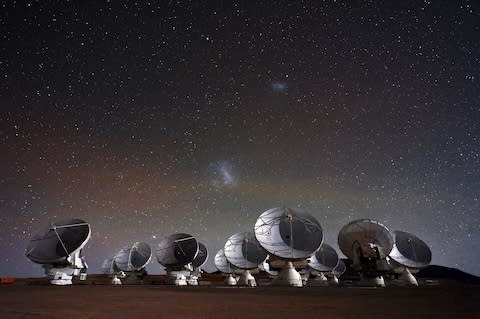
6. Pic du Midi Observatory, Haute-Pyrénées, France
A Cold War-era concrete construction on a ridge 9,438ft up in a mountain in the French Pyrénées, Pic du Midi looks more like a James Bond villain’s den that a world-class observatory. Out on the stargazing terrace are several domes, one painted by French graffiti artists the 65ers to look like an igloo, another to look like Stormtroopers from Star Wars. Its Nuit Au Sommet package includes dinner, guided stargazing and a night in cosy quarters normally used by astronomers. Whichever way you look is the Pyrénées National Park, an International Dark Sky Reserve.
The Pic du Midi’s one-night Nuits Au Sommet package costs from €339 per person, which includes a return cable car journey from La Mongie, dinner, drinks, guided stargazing with telescopes, breakfast and accommodation (0033 05 6256 7000; picdumidi.com).
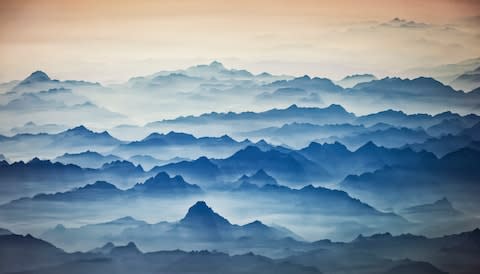
7. Jebel Shams, Oman
It translates as the Mountain of the Sun, but Oman’s highest peak, Jebel Shams in the country’s north east, is actually at its best after dark. Up here in the Al Hajar Mountains, the stars don’t twinkle, they glow, and here at 23 degrees N latitude it’s even possible to see the constellation of the Southern Cross on the horizon in spring, and many other southern hemisphere sights.
An eight-day Arabian Sands Eclipse tour from December 21-29 2019 coincides with an annular ring of fire partial eclipse and costs £1,775 (without flights) or £2,799 (with flights), which includes all accommodation and some meals (01252 883957; explore.co.uk).
Top tips for stargazers | How to make the most of the skies
8. La Palma, Canary Islands
There are few more stirring sights in astronomy than some of the world’s largest robotic telescope domes of La Palma’s Observatorio del Roque de los Muchachos. Above the clouds at 7,860ft, the night skies up here are transparent. It’s about an hour’s drive up from almost anywhere on the island, and worth visiting in the day either for hiking or for a tour of one of its mighty ’scopes. The entire island is dotted with a network of superbly appointed astronomical “miradors”, each with star-charts in English and Spanish. This is organised astro-tourism at its very best.
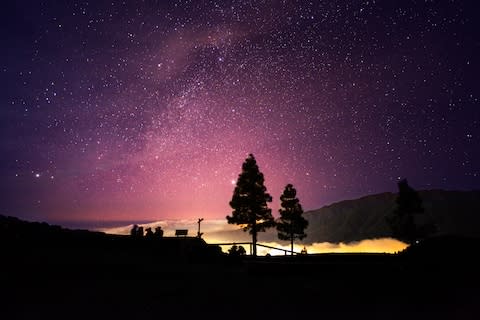
AstroCamp La Palma organises sky watching evenings and can also book a 90-minute tour (between 9am-1pm) of Observatorio del Roque de los Muchachos for €9 per person, including a tour of the interior of one of the professional telescopes (0034 622 805 618; astrolapalma.com).
9. Cuzco & the Inca Trail, Peru
Peru’s 27-mile Inca Trail hike to the lost city of Machu Picchu may be on many a traveller’s bucket list, but few realise how big a part astronomy plays in the Sacred Valley. Don’t miss a pre-trek visit to Cuzco Planetarium (planetariumcusco.com), where astronomers will show you Inca constellations that exist in the dark rifts between the stars. After a long day’s hike on the Inca Trail, campsites as high as 12,033ft will put you eyes-on with a bright Milky Way.
An eight-day Inca Trail trip from Lima via Cuzco to Machu Picchu costs from £1,075, which includes most meals, transport, four nights hotel and three nights camping (0808 274 5111; intrepidtravel.com).
10. Galloway Forest Park, Scotland
While Dark Sky Reserves are all about preventing light pollution getting any worse, Dark Sky Parks recognise places “possessing an exceptional or distinguished quality of starry night”. The Galloway Forest Park in Dumfries & Galloway is such a place, and though it suffers from the same cloudy skies as the rest of the UK, clear nights here are hard to beat. Its three visitor centres all have “dark sky” signposts that tell you exactly what constellations to look for during each season. Clattering shaws Visitor Centre is away from trees and looks over the darkest part of the park, while the Scottish Dark Sky Observatory (scottishdarksky observatory.co.uk) holds stargazing events from Thursday-Saturday.
A two-night Stargazing Break (October, December, February and March) costs £295 per person, which includes two nights’ dinner, bed and breakfast at the Selkirk Arms in Kirkcudbright, transport to and from Galloway Forest Dark Sky Park, and stargazing with the astronomer Steve Owens (01557 330402; selkirkarmshotel.co.uk).
Jamie Carter is the editor of WhenIsTheNextEclipse.com and author of A Stargazing Program for Beginners: A Pocket Field Guide (Springer; £40.99).